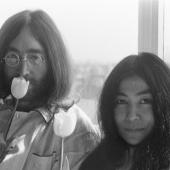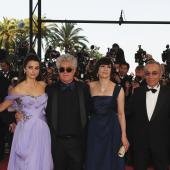Silent Movie
It is a long long time ago since the silent film conquered the world. Be it "A Trip to the Moon" (1902), which is considered as the first significant piece of the genre science fiction, or Charlie Chaplin with his pantomimic cinematography in the 1920. The silent film has shaped today's cinema and went along with the following art epochs since its invention. A journey through time.
The silent film era was from 1895 to 1927. The Lumière brothers invented the cinematograph, who was a recording, copying and playback device at the same time. The first presentation of her film "Workers Leaving the Lumière Factory" was shown in 1895 to a selected audience of upper class people. As the name of the film suggests, realistic events were documented at the beginning of film history, such as the station entering of a train. As recently as Georges Melies brings the narrative character in the movie and shoots staged stories as first.
The first films were becoming increasingly popular and so the first cinema emerged with fixed location. Previously, there were only traveling cinemas. After the outbreak of World War I in Europe the production of propaganda films went through the roof and developed a new genre: The war movie. Since the US initially was only little affected by the war, here the film industry flourished. The largest film distributors under Thomas Edison founded the "Motion Picture Patents Company" (MPPC). In Hollywood, many filmmakers settled such as William Fox, Samuel Goldwyn or Carl Laemmle. It was them who laid the foundations for the later dream factory. Laemmle founded the first major film studio: Universal Pictures. The genre Western was very popular at that time.
Characteristic feature of the silent film are the gestures of the actors. In the dialogues in the film, it is important to convey the viewer actions and contexts through body language. At that time actors were even taken over from the theater. These of course also brought their performing habits to the film. Only gradually, a film-specific acting style developed.
Slapstick was a common genre in the 1920s. Comedians as Buster Keaton, Laurel & Hardy or Charlie Chaplin made use of this form of comedy. Intertitles in the films convey information and meaningful relationships that are necessary for the understanding of a scene. They reduce the dialogues down to the most important statements. A very important part in silent film is music. In silent movies music is intrinsically tied to the image. Often orchestras were used, later also pianos or phonographs.
Important silent films at the time were: Nosferatu, Dr. Mabuse, Ben Hur or Metropolis. All are considered masterpieces of their time. Those interested in silent films, here's a tip: ARTE for 20 years now shows a classic in the context of the silent film Rendezvous every month to rediscover silent film. Check it out.




